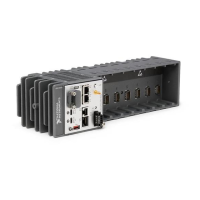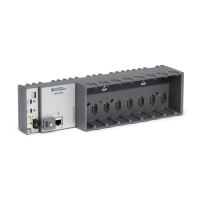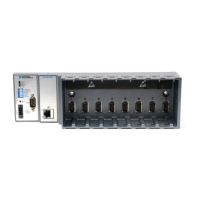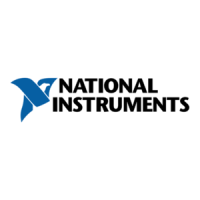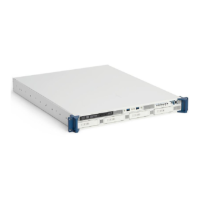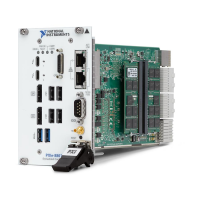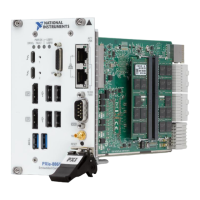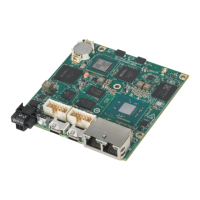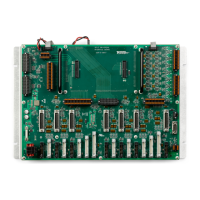1-46 | ni.com
Chapter 1 Getting Started with the cDAQ Controller
– The Digital Output Timing Signals section of Chapter 4, Digital Input/Output and PFI
• Triggering Modes—The cDAQ controller supports different trigger modes, such as start
trigger, reference trigger, and pause trigger with analog, digital, or software sources. Refer
to the following sections for more information:
– The Analog Input Triggering Signals section of Chapter 2, Analog Input
– The Analog Output Triggering Signals section of Chapter 3, Analog Output
– The Digital Input Triggering Signals section of Chapter 4, Digital Input/Output
and PFI
– The Digital Output Triggering Signals section of Chapter 4, Digital Input/Output
and PFI
• Independent Data Streams—The cDAQ controller supports seven independent
high-speed data streams, which allow for up to seven simultaneous hardware-timed tasks,
such as analog input, analog output, buffered counter/timers, and hardware-timed digital
input/output.
• PFI Signals—The PFI signals provide access to advanced features such as triggering,
synchronization, and counter/timers. You can also enable a programmable debouncing
filter on each PFI signal that, when enabled, samples the input on each rising edge of a filter
clock. PFI signals are available through parallel digital input and output modules installed
in up to two controller slots. Refer to the PFI section of Chapter 4, Digital Input/Output
and PFI, for more information.
• Flexible Counter/Timers—The cDAQ controller includes four general-purpose 32-bit
counter/timers that can be used to count edges, measure pulse-widths, measure periods and
frequencies, and perform position measurements (encoding). In addition, the
counter/timers can generate pulses, pulse trains, and square waves with adjustable
frequencies. You can access the counter inputs and outputs using parallel digital modules
installed in up to two slots. Refer to Chapter 5, Counters, for more information.
Processor and Ports
Refer to the specifications document for your cDAQ controller for information about the
processor on the cDAQ controller. Refer to the cDAQ Controller Features section for
information about using the various ports on the cDAQ controller.
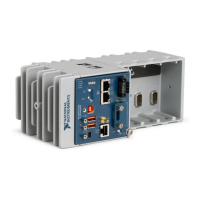
